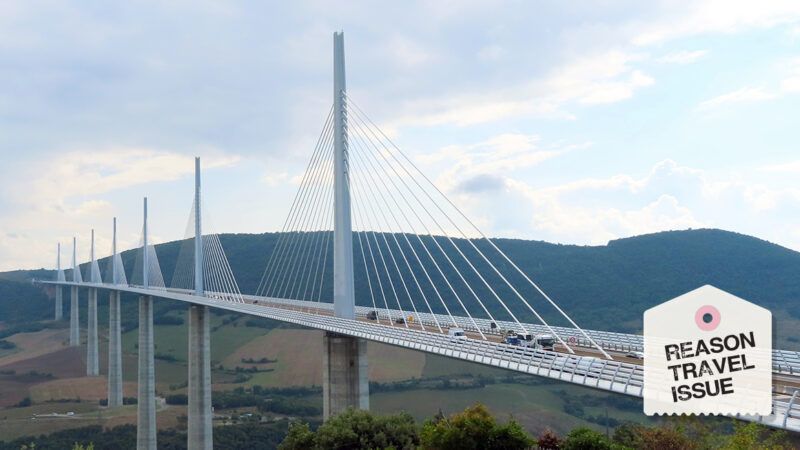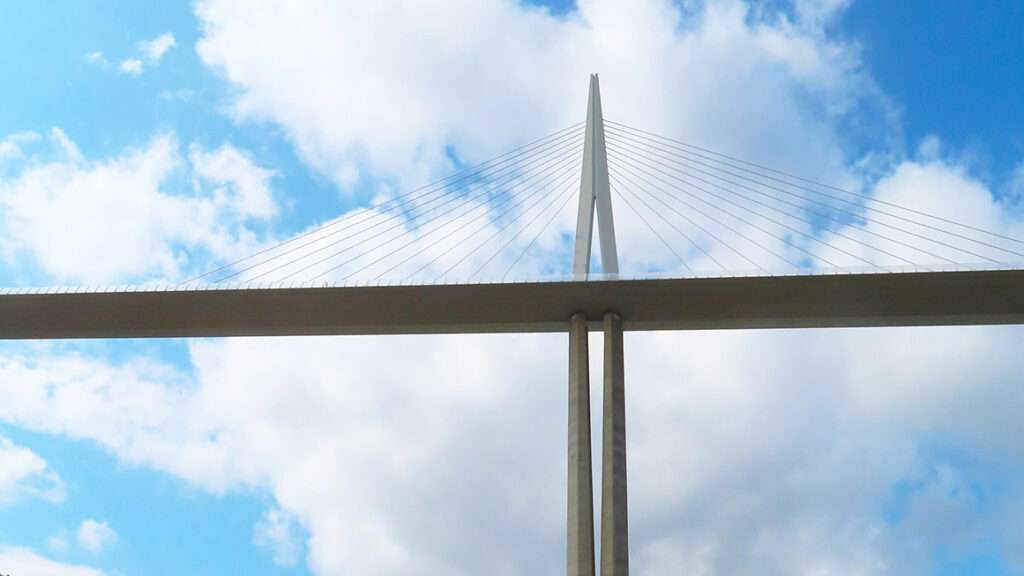Europe's Highest Bridge Was Built Without Government Subsidies
France's Millau Viaduct is an engineering marvel funded by tolls.

This is part of Reason's 2025 summer travel issue. Click here to read the rest of the issue.
For my 80th birthday, my wife Lou offered to plan a trip somewhere I'd always wanted to go. I chose the Millau Viaduct—Europe's highest and most wonderful bridge.

I used a photo of the viaduct on the cover of my 2018 book, Rethinking America's Highways, because it is a superb example of a major highway project as a business enterprise. There were no government subsidies involved in the 1,125-foot-high bridge, which spans the gorge valley of the River Tarn near Millau in southern France. It was financed and is operated and maintained based on toll revenue, exemplifying key ideas in the book.
But it's also more than that. Anti-privatizers like to portray privatized infrastructure as done on the cheap, potentially cutting corners in pursuit of a profit. I already knew that was false, based on a coffee table book about the Viaduct's design. Discovery Channel's coverage of the last stages of its construction declares that it "fits perfectly into the beautiful landscape." It also saves vehicles on the motorway from Paris to the Riviera nearly an hour, compared with driving down into the valley.
The Viaduct is not merely an engineering marvel; it's breathtakingly beautiful. Seeing it up close, first from the floor of the valley and then driving across it, was overwhelming. Last year was the bridge's 20th anniversary, and the company is introducing electronic tolling at its toll plaza.
